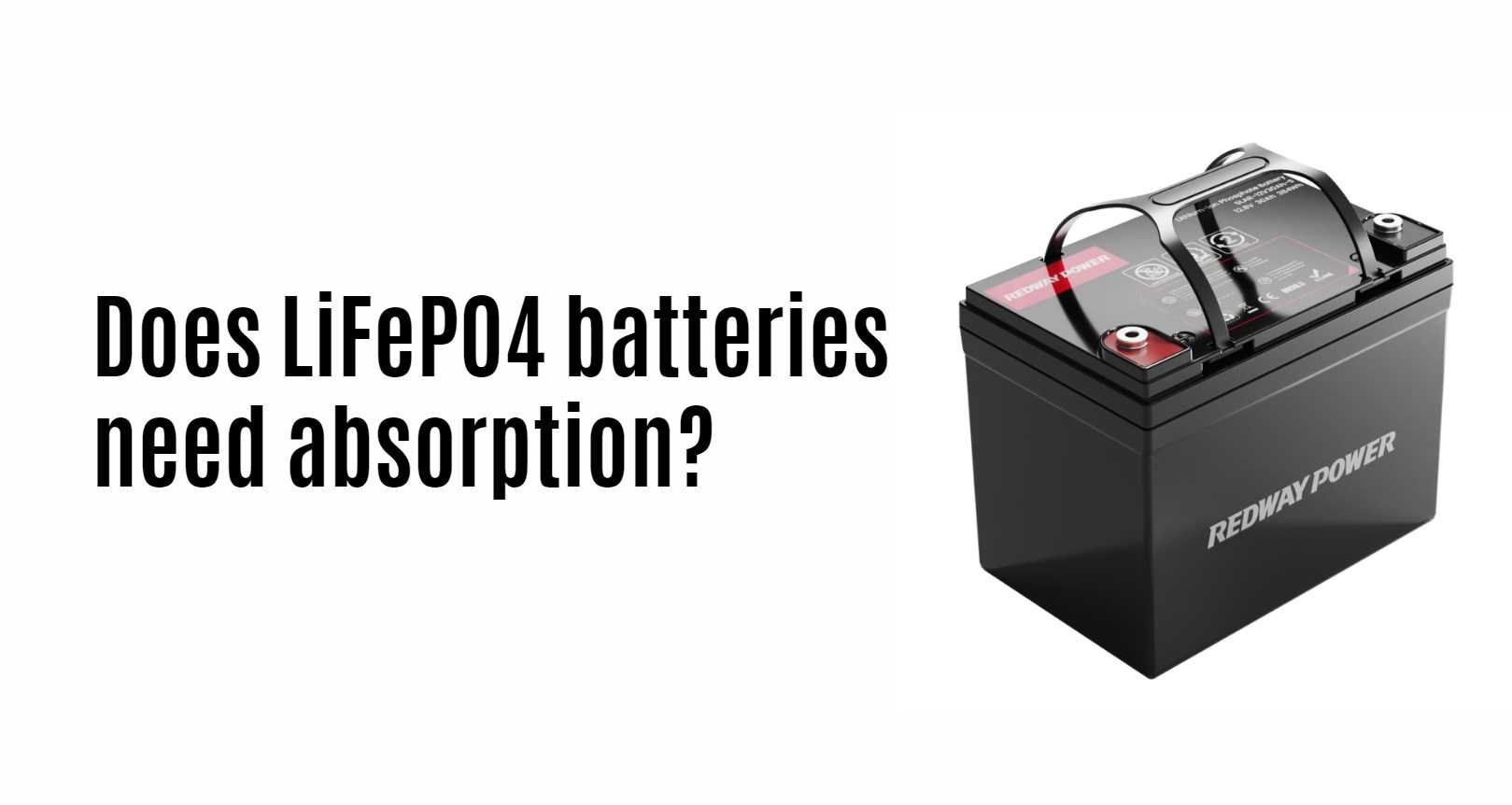As the demand for efficient and reliable energy storage solutions continues to rise, understanding the charging requirements of LiFePO4 batteries (Lithium Iron Phosphate) is crucial for optimizing performance and longevity. One common question that arises is: Do LiFePO4 batteries need absorption charging? In this article, we will explore the charging characteristics of LiFePO4 batteries, the role of absorption charging, and best practices for ensuring optimal battery health.
Understanding LiFePO4 Battery Charging
Charging Stages
LiFePO4 batteries typically undergo three main stages during the charging process:
Wholesale lithium golf cart batteries with 10-year life? Check here.
-
Bulk Charging: In this initial phase, the charger delivers maximum current until the battery reaches a predetermined voltage level.
-
Absorption Charging: This stage maintains the voltage while gradually reducing the current as the battery approaches full charge. This is where many users question its necessity.
-
Float Charging: Once fully charged, the charger switches to a lower voltage to maintain the battery at full capacity without overcharging.
Nominal Voltage Considerations
A standard LiFePO4 cell has a nominal voltage of approximately 3.2V. For a typical 12V LiFePO4 battery pack, four cells are connected in series, resulting in a nominal voltage of about 12.8V.
Want OEM lithium forklift batteries at wholesale prices? Check here.
The Role of Absorption Charging in LiFePO4 Batteries
1. Is Absorption Charging Necessary?
Unlike other lithium-ion chemistries, such as NMC (Nickel Manganese Cobalt), LiFePO4 batteries do not require a prolonged absorption phase to ensure full charge. The chemistry of LiFePO4 allows for more straightforward charging protocols:
-
Shorter Absorption Phase: While some chargers may include an absorption phase, it is generally shorter compared to other lithium-ion batteries.
-
Reduced Risk of Overcharging: The inherent stability of LiFePO4 chemistry minimizes the risk associated with overcharging during this phase.
2. Benefits of Reduced Absorption Time
- Efficiency: Shorter absorption times lead to faster overall charging cycles, enhancing usability.
- Battery Health: By minimizing unnecessary prolonged charging, you can reduce heat generation and potential wear on the battery cells.
Best Practices for Charging LiFePO4 Batteries
To maximize performance and lifespan when charging your LiFePO4 batteries, consider these best practices:
1. Use Quality Chargers
Always use a charger specifically designed for LiFePO4 batteries. These chargers are programmed to handle the unique charging profiles required by this chemistry.
2. Monitor Temperature
Keep an eye on battery temperature during charging. Optimal temperatures (between 20°C and 25°C) enhance efficiency and safety. Avoid charging at extreme temperatures.
3. Regular Maintenance Checks
Conduct routine inspections on your battery system:
- Check connections for corrosion or wear.
- Verify that the charger displays accurate voltage readings.
4. Avoid Deep Discharge
While LiFePO4 batteries can handle deep discharges better than other types, it is advisable to limit discharge to around 20% capacity to prolong lifespan.
Data Chart: Comparison of Charging Protocols for Different Battery Types
| Battery Type | Bulk Charge | Absorption Charge | Float Charge | Recommended Charger Type |
|---|---|---|---|---|
| LiFePO4 | Yes | Short | Yes | LiFePO4 specific |
| Lead-Acid | Yes | Long | Yes | Lead-acid specific |
| NMC Lithium-Ion | Yes | Standard | Yes | Lithium-ion specific |
Latest News on LiFePO4 Battery Technology
As of October 2024, advancements in lithium battery technology continue to evolve rapidly:
Enhanced Charging Solutions
New smart chargers are being developed that optimize charging cycles based on real-time data analytics, allowing for more efficient energy management while minimizing wear on batteries.
Focus on Sustainability
Manufacturers are increasingly focusing on sustainable production practices for lithium batteries, including recycling initiatives aimed at reducing environmental impact.
FAQs About Absorption Charging in LiFePO4 Batteries
1. Can I skip absorption charging altogether?
While not strictly necessary, it is advisable to follow manufacturer guidelines regarding charging protocols for optimal performance.
2. How do I know if my charger is suitable for LiFePO4 batteries?
Check for specifications indicating compatibility with LiFePO4 chemistry and features like automatic cut-off and temperature monitoring.
3. What happens if I overcharge my LiFePO4 battery?
Overcharging can lead to overheating and potential damage or failure of the battery; hence using a proper charger is essential.
4. How can I monitor my battery’s health?
Use a Battery Management System (BMS) or compatible monitoring devices that provide real-time data on charge levels and overall health.
Conclusion: Understanding Absorption Charging for Your LiFePO4 Battery Pack
In conclusion, while absorption charging is not strictly necessary for LiFePO4 batteries due to their stable chemistry, adhering to best practices in charging can significantly enhance performance and lifespan. By utilizing quality chargers and monitoring conditions closely, we can ensure that our energy solutions remain efficient and reliable.At Redway Battery, we specialize in manufacturing high-quality lithium LiFePO4 batteries tailored to meet diverse needs across various applications. For quick quotes on custom solutions or wholesale inquiries, feel free to contact us today!







